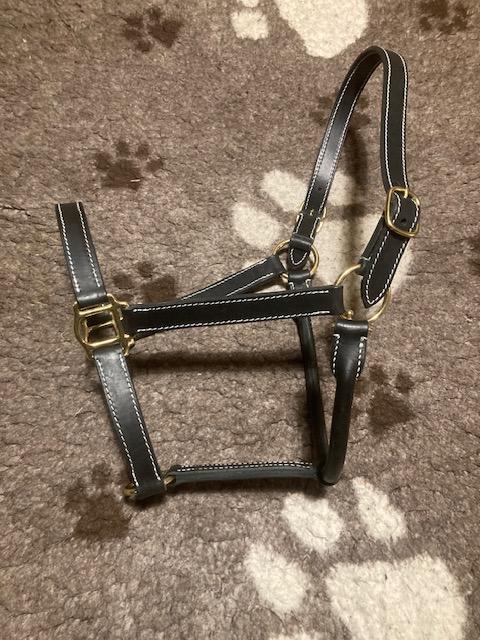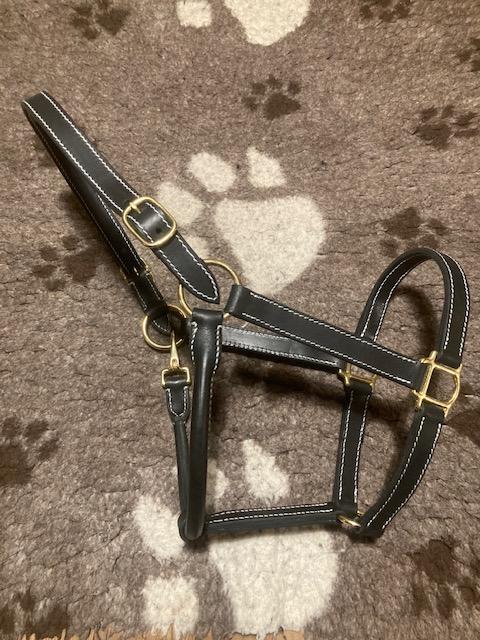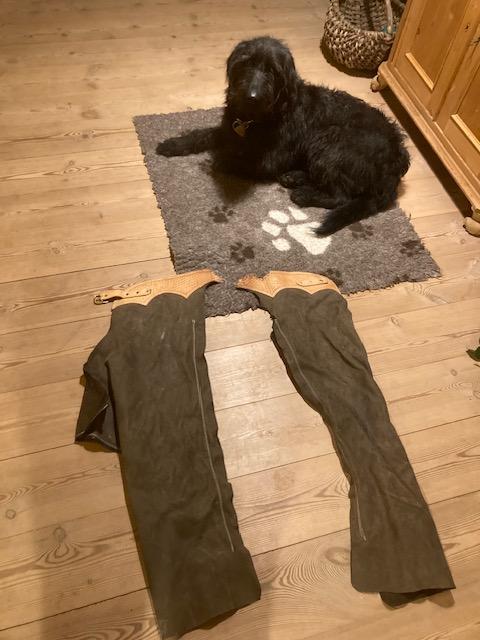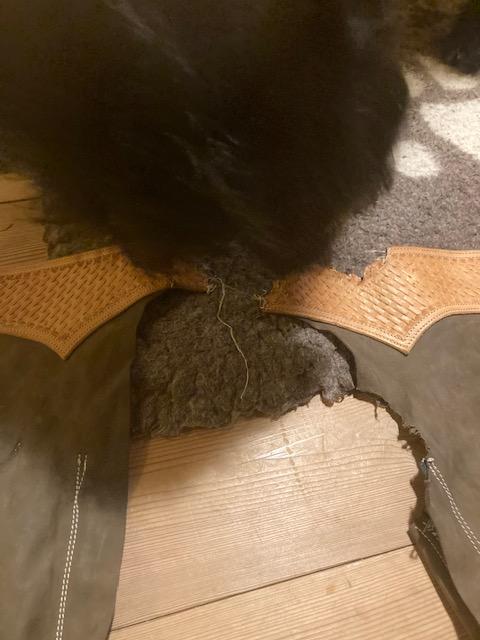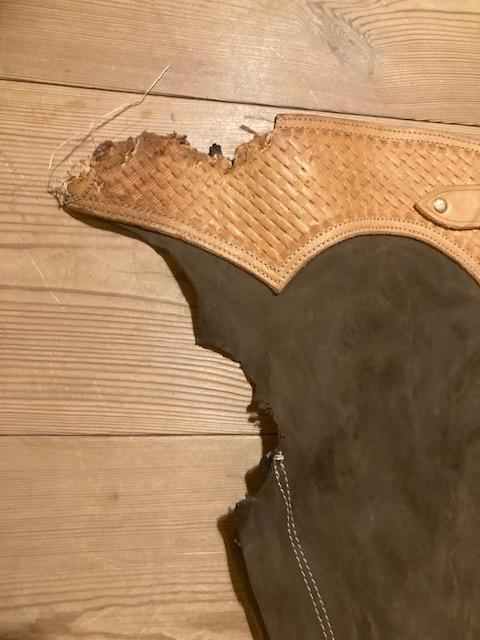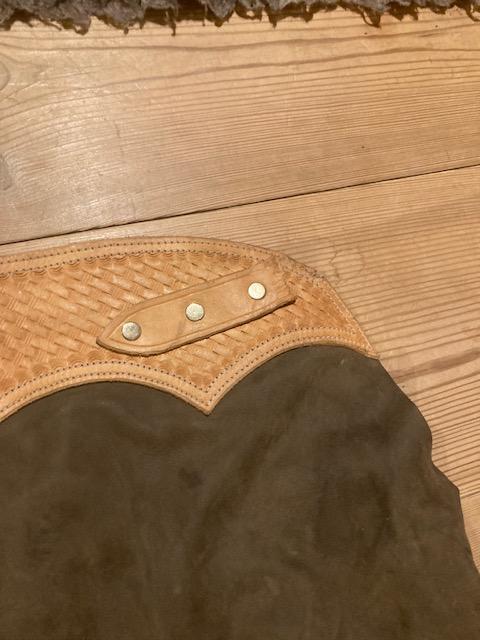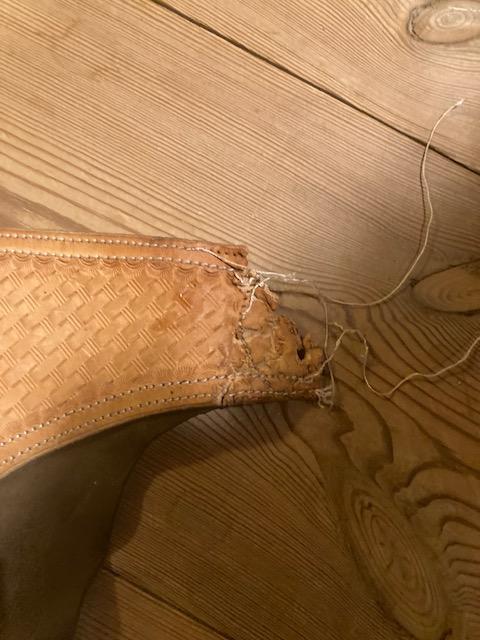-
Posts
756 -
Joined
-
Last visited
Content Type
Profiles
Forums
Events
Blogs
Gallery
Everything posted by Mulesaw
-
@Younes Hi If the machine is hydraulic, I don't think that the wiring is overly complicated. If you can find a local electrician who specializes in automation he should be able to troubleshoot in a short time. Can you explain what the machine does and doesn't? I mean do does the hydraulic pump start when you press start, or is all just dead? My best guess without knowing the machine would be that you are required to push 2 places in order for the press to work (in order to keep hands away from the machine, if one of those switches or pushbuttons are damaged, you can press but the machine won't see the signal and won't move. If you can locate those push buttons, you can try to measure them yourself if you have a multimeter (around 100 SEK in Biltema) 1) Unplug the machine while you work on it. 2) Put the selector on the multimeter on OHM (resistance) 3) look on the back of the pushbutton, you might have to unscrew it from the machine to get access to the back. 4) measure the resistance when you activate the push button. If the button is healthy, it should have a resistance close to 0 Ohm. if not, the pushbutton is bad. 5) if there is an emergency stop on the machine, the measurement is the opposite. When the emergency stop is not operated you should be able to measure approximately 0 Ohm over the terminals. Another thing that could potentially be wrong is the solenoids on the hydraulic valves. You can measure the resistance and check that there is some resistance in them. Probably around 25-50 Ohm If there is a very large number, the winding in the solenoids are burnt and you will need a new solenoid. I hope this helped a bit. Good luck with the machine. Brgds Jonas
-
Agreed, actually the German text is a bit vague. He describes that the pot should be heated to red hot, but that would cause the leather to burn, unless you had put a tight fitting lid on to prevent any air from entering. And he doesn't mention the lid. I don't know if anyone still does this case hardening on a small scale. But apart from the atrocious smell of roasted leather, it could be an interesting experiment.
-
I had to look up Wootz steel, and it sure does sound a bit like it. I Googled case hardening yesterday after my post, and it is still done. An example could be a sprocket for a gearbox, where you machine it almost completely. Case harden it, complete the machining and harden it. It should leave you with a hard outershell and a robust core. But if carbon from leather is better than say powdered carbon from charcoal - that I don't know :-)
-
Congratulations. Looks like a darn nice machine!
-
In an old German saddler book, the author specifically writes about utilizing scraps. All sorts of scrap that are to small or to bad to be used for anything else should be put into an iron pot and carbonized by heating this pot over the fire till it is burnt. The burnt leather is then mashed while in the pot, and when it has cooled off, it is finely ground. The carbonized leather is (according to the author) sold to knife makers and instrument makers, And they use it for hardening fine steel. I am pretty sure that the hardening process he is referring to is called "case hardening". You fill a steel box with the carbonized leather and put the item to be hardened into it. put a lid on it all and heat it all to red hot. Keep the heat for a couple of hours. That will cause carbon to infuse the surface of the steel to be hardened so you get a higher carbon content and you can then harden it like normally. I have no idea if anybody still does this since nowadays you can easily get steel with a defined carbon content in. I guess it wasn't quite as easy in 1908. But anyway that is a suggested use of the final remnants of scrap according to the book "Das Sattler, Riemer und Täschner Handwerk" by K. Vollmer Personally I try to use my small scraps for belt keepers and stuff like that. But I think that I could do better. I might have to look into making some key rings.
-
I built my first pair of chaps using a free pattern from Tandy. The yokes were just one size, the difference was how wide yo made the legs - and how long you made the back- and front belt. Later I have bought a pattern pack from Tandy, and the yokes are still just one size. The first chaps were for my daughter and I am pretty sure she is something like 30" (I didn't measure though). If you are going to make your own pattern for the yokes I'd make them so that they leave maybe 6" forward and probably 4" in the rear, but that is just guessing from how I remember they sat on her. For inspiration there's a part of this forum specifically for stuff like chaps: https://leatherworker.net/forum/forum/100-clothing-jackets-vests-and-chaps/ @FrenchMich and @Rolandranch have both made some gorgeous chaps, so for inspiration it is definitely worth looking at their posts. Brgds Jonas
-
Does anyone like this type of belt buckle?
Mulesaw replied to chingyoung's topic in Hardware and Accessories
No, too much decoration and bling to my taste. -
@Alexis1234 I just googled hame bender to see what one looked like. I have no idea how much one would cost, but having a son who is training to become a blacksmith I am pretty sure that any youngster (or oldie) training to become ablacksmith / metal worker of sorts would be able to weld one together for you in a couple of hours. A bottle jack shouldn't be too expensive either. So in case a new one is expensive, I'd try to get in touch with any local technical colleges you have nearby and ask if they could make one for you as a training exercise. My son would without a doubt be willing to make one for you, but I'm afraid that the shipping will be a killer :-) Good luck with finding one.
-
I use mine a lot. It is great for replacing zippers in riding boots, though if the boots are of the dressage type, the arm is a bit short on this model. But for jumping boots it is perfect. Also general shoe repair jobs.
-
@toolleather I don't think that you can repair that in a way where it will become invisible/blend in. The scratch looks as it is very deep, and I can see that it has even severed some of the stitches on the ornamentation. If you give only that area some oil, you'll darken the surroundings some - and the scratch itself will look even darker I'm afraid. You could try to give all of the brown leather part some oil or leather grease. but the scratch will still be visible. To me it looks like a pair of expensive boots. So it might be worth finding a couple of pieces of leather of approximately the same tan and colour, and then try to make a heavy scratch in those pieces of leather and do some testing on those before moving to the boots. maybe you could find some cheap 2nd hand boots at a thrift shop to experiment on. Good luck Brgds Jonas
- 6 replies
-
- boots
- boot repair
-
(and 2 more)
Tagged with:
-
Great looking knife! I think the most important thing is that the sheath looks nice from the front, and it does! So never mind that the stitches on the back are not 100% as nice looking as those on the front. If it holds the leather together - that is the main thing. The only suggestion I have would be to ad some sort of a securing flap. I'd hate to loose such a beautiful knife because I tipped in a canoe and it fell out while I was trying to get back in. I am not sure how I would do it on your pouch, but probably something similar to the leather pouches of the Buck 110 knives. Brgds Jonas
-
stitching clamp Help needed with Ash wood
Mulesaw replied to indynusp's topic in Leatherwork Conversation
@indynusp Most woods can easily get a colour stain just by a drop of water, or a greasy finger etc. If you put wax on after that it will sort of seal it in the wood. There is no harm done at all, but if you want it to be completely free of marks etc. you need to sand it all down again, and then reapply wax to seal the surface. But it is the beauty of a natural material that it will age or develop a patina. It doesn't affect the strength of the wood at all. Some wood species have "colouring" that will be activated by water. Idigbo for instance will turn really yellow if wetted. Ash is much more well mannered in that respect. :-) -
looking great, I like the Proverb on the belt.
-
@Handstitched Happy New Year to you. Up here in the cold north we are still trying to wring out the last few drops of 2023. May 2024 bring you good health, plenty of leather and lots of happiness Cheers
-
@spurdude101 Pethardware in Czeckia has got some, but I don't know about the quality, and it is not in the US. Laederiet in Denmark has got some good buckles and stuff: https://lederiet.com/shop/97-for-harness/ I haven't been able to find wide bull snaps though. Also that shop is in Denmark, so the shipping is probably expensive. Another idea would be Argentina. I am pretty lousy at speaking Spanish, but I managed to find this shop: https://arandu.com.ar/producto/60202b-guarnicion-tiro-de-uno-con-pechera-y-herrajes-de-bronce-factura-fina/ I had a friend who lived in Argentina, and since their economy has been bad for the last many years, he told me that they still produce as much as possible locally. And they have a long tradition for using horses, but my language skills are not nearly good enough to do some searching for individual hardware in Spanish. Maybe there's a local blacksmith who could make something for you, but again I'm afraid that the price will be prohibitive. I need some heavy elongated D-rings for a stallion halter project, and I haven't been able to find those that I need, so I'm planning on making them myself. Halter snaps you could get a regular 1" wide model of brass / bronze and then I'd silver solder a new wider eye to it. Good luck, brgds Jonas
-
@Goatmother In the old book called saddle makers illustrated journal there is a recipe for a leather nourishing paste. It is just beef tallow and neatsfoot oil. 3 lbs of tallow melted and 1 lb of NFO poured into the melted tallow. stirred until cooled. I have tried to make it and it works really well. You can off course make a smaller batch. It was originally mentioned as being for work harnesses. Brgds Jonas
-
@chuck123wapati Yes he was kind enough to just chew on the veg tan :-) So the repair job was doable, I haven't done much leatherwork this year, kind of lots going on with the breast cancer and what not, but now I'm back on the ship, so I thought that I'd better contribute a little to the community again :-) It's nice to be back though. @Dwight It is a bit of a difficult situation, since I kind of blame my son for leaving his stuff on the floor like that, and the dog is primarily my wife's, and as long as you don't catch a dog in the act, there's not much point in cursing at them. But still I was slightly annoyed (to put it mildly) Since I had put a lot of pride into making the chaps last year. Brgds Jonas
-
@DieselTech thanks for the kind words. Horse related stuff is usually well received by horse owners. So if you would like to make something like it, A halter is really a good place to start, since most horse owners use halters of some kind. It is a doable project, even by hand stitching, but it takes a bit of time. But then again - if you have made it correctly, the halter will last for the next 50 years or so. @TomE Thanks, I follow the instructions given by Gustav :-) And he likes that the stitches are visible. He got his journeyman's certificate as a carpenter this fall, but he has accepted a job as jumping rider at a stable called ESH sport Horses, I don't think the have a net page, but they are on IG. When I visited him he showed me that the head rider also had a triple stitched halter, something Gustav had never seen save for the first one that I made. I am planning on making a stallion halter based on a model that I borrowed from Katrinelund (the local large stallion station) I'll try to make some instructions for it to post here when I get it done. It is a heavy type halter with doubled leather all the way round The throatlatch and the noseband are both in one piece 5/4" wide. The cheek pieces are fastened through a slot in those. So the only hardware is a Ring in the bottom of the nose band. And 3 buckles. one for each cheek piece and one for the throatlatch/neck piece. According to the owner of Katrinelund it is an old model that he had an old saddlemaker make for them years ago. And I can see the idea in it. It isn't a particularly pretty halter but it does a specific job, and it is virtually impossible for the stallions to loose the halter or to tear it apart.
-
Using the fantastic instructions given by @TomE, I made another double stitched halter for Gustav's girlfriends new horse for Christmas. For some reason they prefer a double stitched halter to a triple stitched, so I give them what they want. This one I made the rolled throatlatch a bit thicker by adding a double filler. The last black one I made was a bit harder to do than the brown ones, It was like the leather was harder, so to overcome that I inserted a thicker filler, and it made it easier. I have also engraved a name tag for the halter, just like I did on the last halters that I have made. The name tag was sewn on after these pictures were taken. The horse's name is Ocean X
-
A year ago I made a set of nice shotgun chaps for our son. At some point this summer he had been clearing out a bit in the stable where his horses were, and some stuff came home - including the chaps. Most of this stuff (all of it I think) ended up in a pile in a box on the floor of our own stable. Our dogs have their kennel in connection with the stable, so they can stay inside when the weather is too hot or for whatever reason they might have. The labradoodle must have been bored at some point, because one day I discovered the chaps in a not quite mint condition.. He has been pretty efficient in chewing on the chaps. Both yokes were damaged, the back part of the belt was completely missing. The front belt was missing save the non buckle end. A bit of the softer leather had also taken a biting, but at least he had stayed from the zippers. So in order to get the chaps back in order I had to make new yokes, a new back belt, half a new front belt and then sew it all onto the legs. Hopefully they'll last more than a year this time. The culprit with his work :-) Examining if he did the job thoroughly.. Barely missed the zipper Shortened belt. There used to be a back belt here.
-
Pricing for Custom Saddle Tree Made by Kent Frecker
Mulesaw replied to Teddyi's topic in Leatherwork Conversation
Once in a while it really is a mystery as to why some people get a horse. Our neighbour has got a horse in our stable. Technically it is the daughters horse, but she is grown up and has long ago moved to another part of the country. The neighbour wife comes by once every day to muck out that box and measure up feed for the horse. Maybe once or twice per year, the horse is exercised on a line. That's all. I have never understood why they didn't part with the horse, given that they never get any of the "fun" by having a horse, To me just going in the stable in the morning and being greeted by a low hohohohohohoh is great, and we normally take our horse for a trip in the forest once per week. But having to pay for a horse without getting any of that in return is stragne to me, and I feel sorry for the horse since in my opinion, it would be better off somewhere else, perhaps where a young teenager could take care of the horse and give it the love and time investment that it deserves. I am just puzzled by it. -
@Ferg Thank you Ferg, it is deeply appreciated. I also felt completely blank when we got the diagnosis. We were sort of expecting it because Mette had felt a lump in her breast, but to the very end you just hope that it is something else. but then once it was diagnosed - it just seems so overwhelming. @Sheilajeanne I think that Mette has had something like 16 weeks of chemo therapy before the surgery. We started the first session on May the 1st, and there is still some time to go. But apparently there are different types of breast cancer. And this type should be treated like that. I have previously thought that all cancer was the same, only it attacked different parts of the body. But I learned something new (that I really didn't want to learn)
-
Very nice design. Is there a small piece of leather under that steel bracket that you made, to sort of keep it off the butt of the rifle? Also, the rear part looks great! Those creases are just the right amount of decoration for my taste on something as elegant as this. Did you sew the back part together at the extreme rear end ? Brgds Jonas
-
@Sheilajeanne That sounds like some aggressive medicine for sure, especially given that the side effects from chemo aren't super friendly either. Thought they seem to be more long term like dry eyes, dry and sore mucous membranes etc. For the radiation treatment Mette might stay at the hospital for a few days. They have a patient hotel where she can stay so she doesn't need to drive back and forth every day. We might try that for a few days if the weather is bad. We have a 2 hour drive to the hospital, so basically half a day is spent in transport. She'd then drive there herself, and I's stay at home and take care of the dogs and horses. The good thing this year is that the company have decided that there is no need for keeping a full crew on the ship for Christmas, so instead of going back to the ship on the 22nd of December, I get to stay home until the 27th meaning a regular Christmas at home :-)
-
Ouch, sorry to hear that. It is a monstrous disease. Mette had the cancer nodes surgically removed including the tow nodes in her lymph. The hospital as a precaution always take the neighbor lymph nodes and send those to closer examination. The answer was sadly that they also had signs of cancer in them, so two weeks later it was back to surgery and now all the lymph's in the right armpit have been removed. The hospital then suggested some more chemo therapy, so that is where we are now.. The next step is going to be radiation everyday for 3 weeks. Can't honestly say that 2023 so far has been a great year. But we are still going in the right direction which is good, and the hospital has asked if Mette would be interested in participating in some follow up program where they monitor her more closely for the next 10 years. She has of course said yes, because that'll mean that they will immediately discover if anything is acting up in the future.



